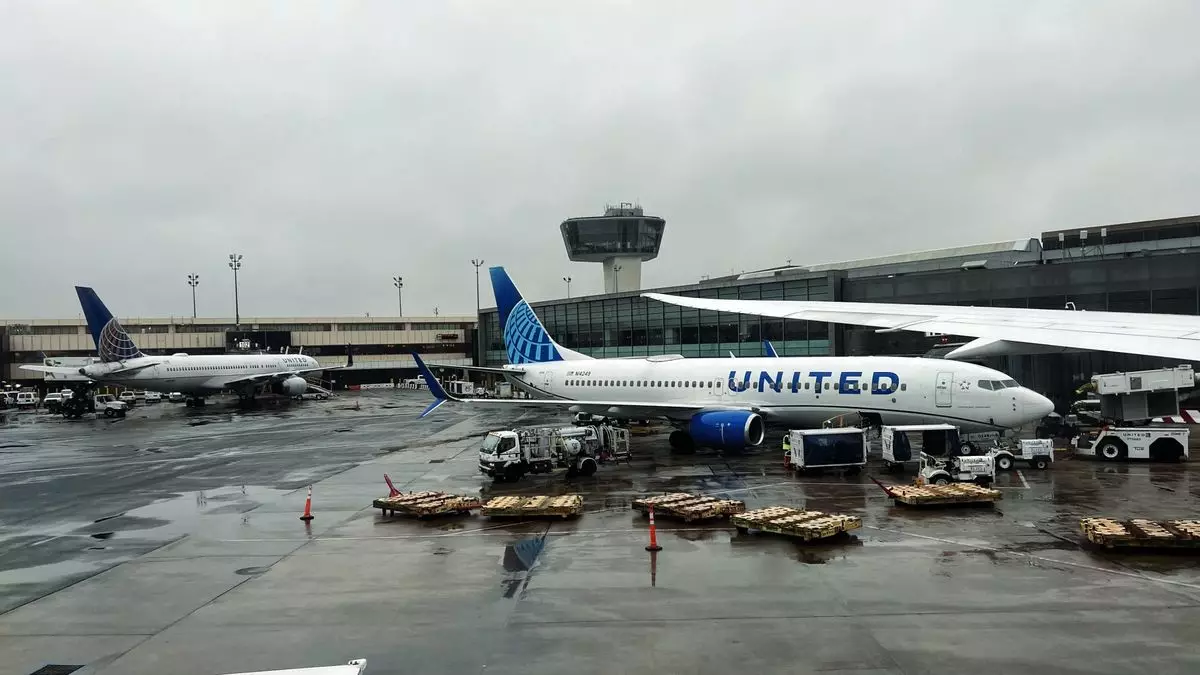Air travel in the United States is undergoing a tumultuous period, with Newark Liberty International Airport at the epicenter of an ongoing crisis characterized by extensive flight delays and cancellations. This unfortunate chaos escalated to alarming proportions on Monday, leading Senate Minority Leader Chuck Schumer to call for an immediate investigation into the factors driving this turmoil, namely a deficiency of air traffic controllers and adverse weather conditions. The urgency expressed by Schumer reflects a growing concern that if left unchecked, these disruptions could proliferate, spreading frustration across the nation’s air travel infrastructure.
New Jersey Governor Phil Murphy has also joined the chorus, reaching out to Transportation Secretary Sean Duffy, emphasizing the need for strategic investments and support for the beleaguered airport. The situation appears more dire given that United Airlines, one of the major carriers operating out of Newark, announced a drastic reduction of 35 daily flights. Such an adjustment indicates that the airline is grappling with a complicated environment where safety and operational efficiency are deceptively intertwined with weather unpredictability and management inadequacies.
Understanding the Root Causes
The Federal Aviation Administration (FAA) has attributed staggering delays—nearly four hours for incoming flights—to a combination of a staffing shortage and persistent cloud cover. Reports suggest that the Philadelphia air traffic control facility, responsible for managing Newark’s airspace, has suffered from a significant burnout of controllers, leading many to take time off to recuperate from the pressures induced by repeated service disruptions. Such a predicament highlights the fragility of the air traffic management system and raises questions about the industry’s preparedness for seasonal demands and crises.
The current situation at Newark has its roots in systemic issues that date back years. United Airlines CEO Scott Kirby pointed out that technological failures have compounded operational hindrances; the airline’s ability to effectively manage aircraft movement has been erratic, further contributing to the flight delays and cancellations that frustrated travelers have come to know all too well. The revelation that over one-fifth of the airport’s traffic controllers participated in a walkout underscores the growing discontent among industry professionals, driven by a belief that their warnings about long-overdue improvements to the air traffic control system have gone unheeded.
A Technology Crisis in the Making
Another troubling aspect to consider is the Trump administration’s acknowledgment that the air traffic control system, deemed “obsolete,” needs urgent modernization. While there have been initiatives aimed at expanding the workforce—such as recruitment drives and grants for existing controllers to defer retirement—the fundamental technology and infrastructure issues remain largely unaddressed. The National Air Traffic Controllers Association underscored this sentiment, pointing out that inadequate technology not only hampers day-to-day operations but also stunts the potential growth of the air travel industry as a whole.
In this context, United Airlines’ decision to scale back operations at Newark illustrates a broader uncertainty plaguing the aviation sector. As key stakeholders in the industry brace for potential economic fluctuations caused by other global factors, such as trade tensions, airlines are faced with the tough decision of how to adapt to fluctuating demand. This environment of unpredictability compels airlines to rethink their operational strategies, which could lead to a long-term transformation of flight schedules and routes.
The Path Forward
To navigate through this ongoing crisis, it is imperative that various parties—the government, airlines, and industry unions—come together to forge a collaborative approach toward revamping the air traffic control system. Proactive engagement in addressing technological and staffing issues is essential. As lawmakers call for investigations and increased oversight, it becomes clear that merely managing symptoms will not suffice. A comprehensive strategy for upgrading technology, boosting morale among air traffic controllers, and ensuring that adequate staffing levels are maintained must form the backbone of any future reforms. The current chaos at Newark is not just an isolated incident but rather a reflection of deeper systemic issues in the American air travel sector that demand immediate attention and action.

